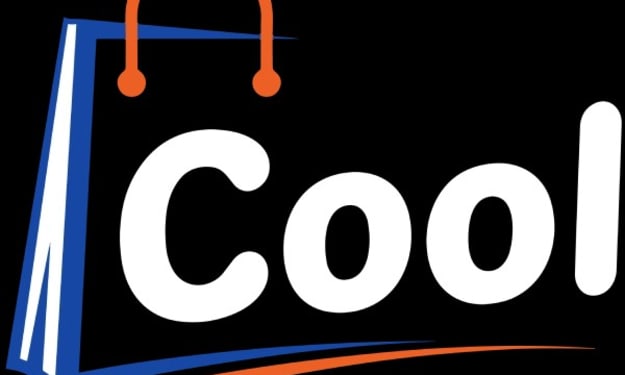6 Effective Local Marketing Ideas for Small Businesses
Marketing Ideas for Small Businesses

As a local small business owner, you want to increase brand awareness and memorability. When your business is on your local audience’s radar, you will engage them more effectively and inspire them to take action.
To build a successful local marketing campaign, you need to combine online and offline marketing.
We have rounded up six proven tips that will help you.
1. Invest in Print Media
With the rise of digital marketing, many local businesses neglect the power of print advertising. However, these channels can significantly improve your reach and maximize brand awareness.
From flyers to local newspaper ads, your marketing options are multiple.
One of the most effective forms of print advertising is direct mail.
According to statistics, up to 90% of direct mail gets opened. You can use it to promote your latest products, special offers, and loyalty programs.
Similar to digital displays, you can integrate print media with your digital channels. For example, add a unique QR code to your digital mail. Once scanned, the link can point a customer to a specific landing page, product page, Facebook page, etc.
2. Use Digital Signage
From in-store kiosks to outdoor LED screens, digital signage is an effective way to promote your local business. It provides customers with multiple touchpoints, increases brand awareness, and maximizes sales.
For starters, pick the content format for your digital signage. You can connect with a cloud app to create personalized presentations. You can also display live videos, your social media feeds, or brand mentions. That is how you engage your audiences and inspire them to communicate with your brand.
You can use digital signage to create urgency, introduce your staff members, or explain how your products work.
Since you can now connect them with your online marketing channels, measuring the results of digital displays is easier than ever.
3. Claim your Google My Business Listings
Google My Business listings are the nerve center of your local marketing strategy. With it, you can add your business information to Google Maps and Search, create your Business Profile on Google, and manage how company data shows up across Google.
Google My Business also pulls customer reviews from its platform and other business listings. That is how it maximizes your local company’s credibility. Positive reviews build trust with both search engines and your target audiences.
Given that, it is not surprising that Google My Business is a leading local ranking factor. According to Bright Local, Google My Business grew from 25% of local pack ranking factors in 2018 to 33% in 2020.
Once you add or claim your GMB listings, it is time to optimize it. Add your company’s essential data, such as its name, location, address, phone number, and email address. Are there any perks, such as loyalty programs or free parking, which make your business special? Make them clear, too.
Also, do not forget to optimize your GMB listings for the right keywords. That way, you tell Google which searches your small business should rank for.
4. Register on Relevant Online Business Directories
Google My Business is vital for your online presence. However, there are more free local listings you need to appear on. NAP citations are also an essential local ranking factor.
The goal is to identify online business directories relevant to your industry and business. Some reputable listings are Yelp, Bing, Foursquare, Angie’s List, Factual, and BBB.
Make sure your company data is accurate and up-to-date. Your NAP information should be consistent across all online business listings you own. Any misspellings or inaccuracies may harm your online performance. If Google cannot understand which business information is correct, it may decide not to show it in local search results.
5. Produce High-Quality Local Content
Today, content quality is more important than quantity. To rank high, brands need to shift from black-hat SEO tactics, such as keyword-stuffing. They need to produce content for users, not search engine crawlers. It needs to be authentic, relevant, and data-driven.
Small businesses can write about local and industry-specific content that attracts relevant audiences to your website. By creating helpful and user-friendly content, you will build trust with your target audience. They will come back for more and share it with their friends.
Most importantly, you will position yourself as a credible industry player. Seeing that you understand the industry, customers will be more likely to do business with you.
To engage audiences, experiment with content types. Apart from traditional articles, you can also create infographics, guides, ebooks, case studies, and whitepapers. Assess the effectiveness of these content forms to determine which ones resonate with readers.
6. Optimize for Local Keywords
Apart from industry-specific keywords with high search volume, focus on local phrases. That is why you will rank high in relevant local searches and drive highly qualified leads to your website.
Start your research by using a keyword analysis tool. For example, if you own a shoe store in Los Angeles, you may type in “Los Angeles shoe store.” The software will compile a list of similar location-specific phrases.
Also, remember that most local searches are performed via mobile devices. Many smartphone users rely on voice assistants, such as Alexa or Siri, to conduct Google searches. Since they do not waste time typing keywords into the search box, they can communicate with Google more naturally.
Instead of “Los Angeles shoe store,” they may use phrases like “Find me a shoe store near me” or “Which shoe store near me is open right now?” Therefore, consider optimizing your website for voice searches, too.
Over to You
Local advertising lets your small business increase brand awareness and reach local customers. Most importantly, you will position your local business as a credible source of information.
That is where tactics mentioned above help. When combined, online and offline marketing can boost your reach and grow brand memorability.
To improve the effectiveness of your local marketing strategy, define your audiences and tailor these tactics to their needs.
About the Creator
Enjoyed the story? Support the Creator.
Subscribe for free to receive all their stories in your feed. You could also pledge your support or give them a one-off tip, letting them know you appreciate their work.






Comments
There are no comments for this story
Be the first to respond and start the conversation.